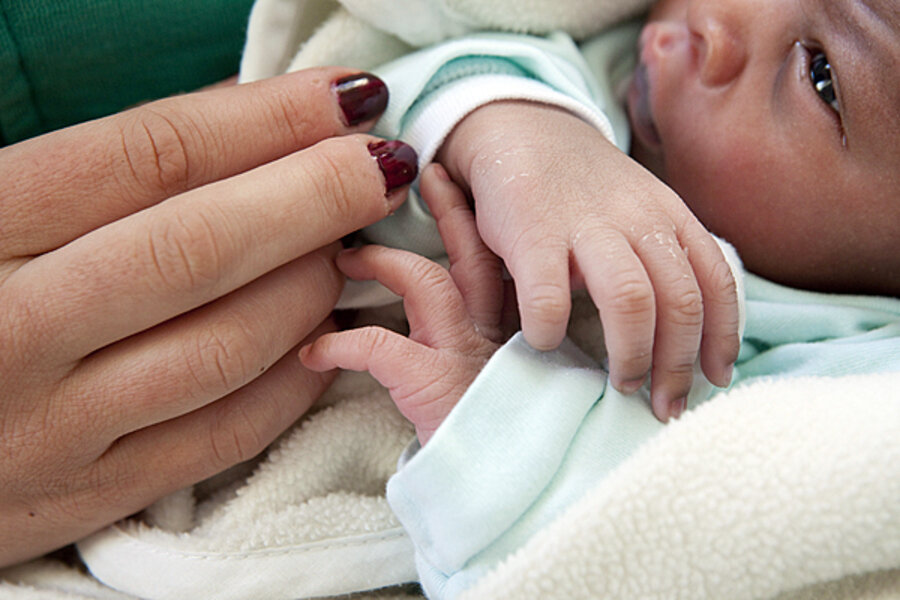AIDS: Orphanage closes its hospice, babies no longer dying
Loading...
| Turffontein, South Africa
It was common, at Cotlands child-care facility, for one baby to die every week, in the small AIDS hospice opened there in 1996. In 2002, 89 babies died, almost two a week. Then, in 2008, babies at Cotlands stopped dying. There were no deaths in 2009 or 2010, either. The center realized this wasn't a fluke: Its HIV-positive children appeared to benefit from antiretroviral drugs, known as ARVs. Children were still being abandoned, or given up for adoption, but not – for the most part – because they were born with HIV. Last December, Cotlands closed its AIDS hospice.
The Cotlands nursery is symbolic of a much bigger story. Today in South Africa, virtually all pregnant women who come to clinics for prenatal care are tested for HIV. By 2010, 95 percent of pregnant women with HIV were receiving ARVs as part of their prenatal care, according to UNICEF. (Combined with counseling about nutrition and hygienic deliveries, ARVs are seen to be reducing the risk of the virus being transmitted from mother to baby to less than 5 percent.) By 2011, the rate of maternal transmission had dropped below 3 percent, according to a national survey by the African Medical Research Council.
These successes, according to various reports from UNAIDS (the Joint United Nations Program on HIV/AIDS), echo globally. In Thailand, the rate of HIV transmission from mother to child has dropped to below 5 percent. In the Caribbean, 80 percent of HIV-positive mothers receive ARVs, up almost 20 percent in a year. Globally, health experts believe, half a million children were spared HIV infection.
The World Health Organization is considering recommending that all pregnant and HIV-positive women be given free ARVs for life. Along with clear benefits, the program brings concern – among some AIDS advocacy groups and HIV-positive women themselves – about mandatory HIV testing of pregnant women and the inequality inherent in gender-based access. HIV-positive women in Malawi and Uganda said in focus groups convened by the Global Network of People Living with HIV that a privileged treatment status may result in tensions in their relationship or in domestic violence.





